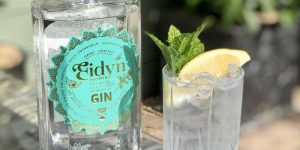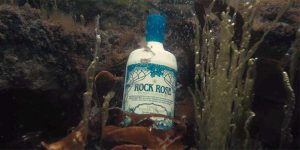Scottish gin enjoyed a mostly positive year in 2021, with 117 new expressions released, up 13% from 2020, despite fewer Scottish gin brands coming into the market.
Overall, although the sector took a hit because of the impact lockdowns had on hospitality, Scottish gin retained its popularity especially globally, after it was placed in the top gin brands in the Drinks International Annual Brands Report for 2022.
According to data by the Gin Cooperative, 11 new Scottish gin brands came to the market in 2021, down 37% from 2020, while three new distilleries opened producing the spirit.
The most popular month for releasing a new Scottish gin was July with 22 new expressions, followed by November with 15 new launches.
The region with the highest number of distilleries producing Scottish Gin remains the Highlands with 24 distilleries.
Furthermore, of the new commercially available Scottish Gin expressions released, 37% were London Dry, 26% Distilled, 22% Flavoured, 6% Cask Aged, 4% Navy Strength, 3% Old Tom and 2% Bathtub.
New releases and brands included Tipple Gin, Shipyard Gin, Sky Garden Gin from Dark Art Distillery, Foghouse Gin, Arrochar Alps Gin, Fassfern Distillery, Great Glen Distillery, Isle of Coll Distillery, Loch Goil Gin, Precision Spirits, amongst others.
The Gin Cooperative noted that the trends for 2021 show a smaller number of new gin brands launched but an increase in the number of new Scottish Gin expressions.
“For the first time in three years, the number of London Dry gins released was higher than any other gin style including Distilled and Flavoured, marking a positive sign of the time and investment by distillers and brand owners focusing on their production process and quality,” the report added.
In the whole of the UK, gin sales across the on-trade market was down by nearly 50% compared to the previous, reaching £647m in the 12 months leading up to July 2021.
The off-trade however saw an increase of 30% to £1.3 billion in the year to 27 March 2021, equal to 80m bottles as consumers turned to online.
In addition the popularity of Flavoured Gin showed no signs of slowing down with an estimated 40% of all gin sales being Flavoured Gin, equal to around 30 million bottles.
“Collective gin sales in 2021 were down, as many in the industry predicted they would be. Focusing on the Scottish Gin category, some smaller brands and producers benefitted and had challenges in equal measure.
“The smaller brands who had established a large number of sales channels including local, regional and UK wide distribution and listings with wholesale, were able to move some volume throughout 2021, but without question 2021 was a year of uncertainty for Scottish Gin across the board,” the Gin Cooperative explained.




